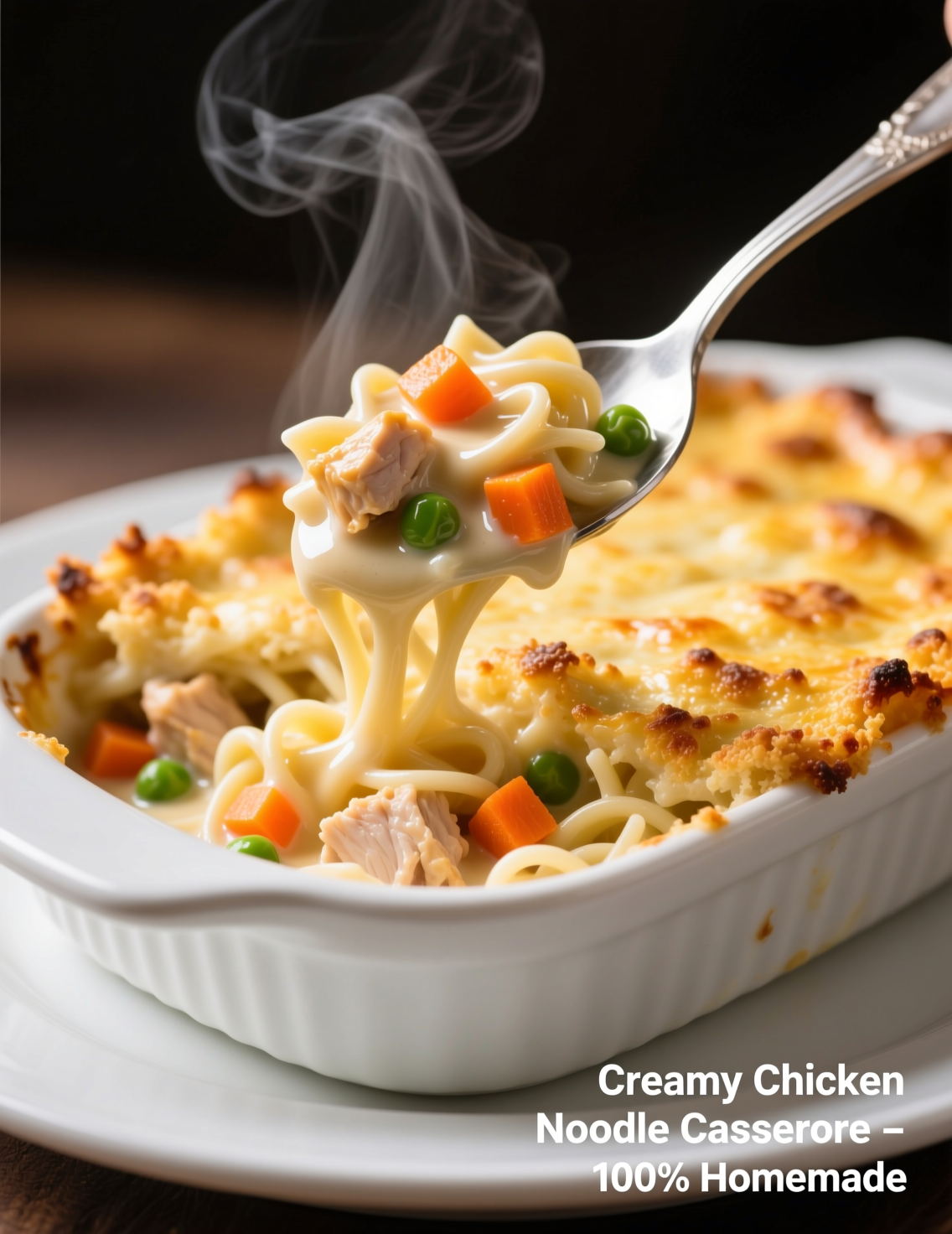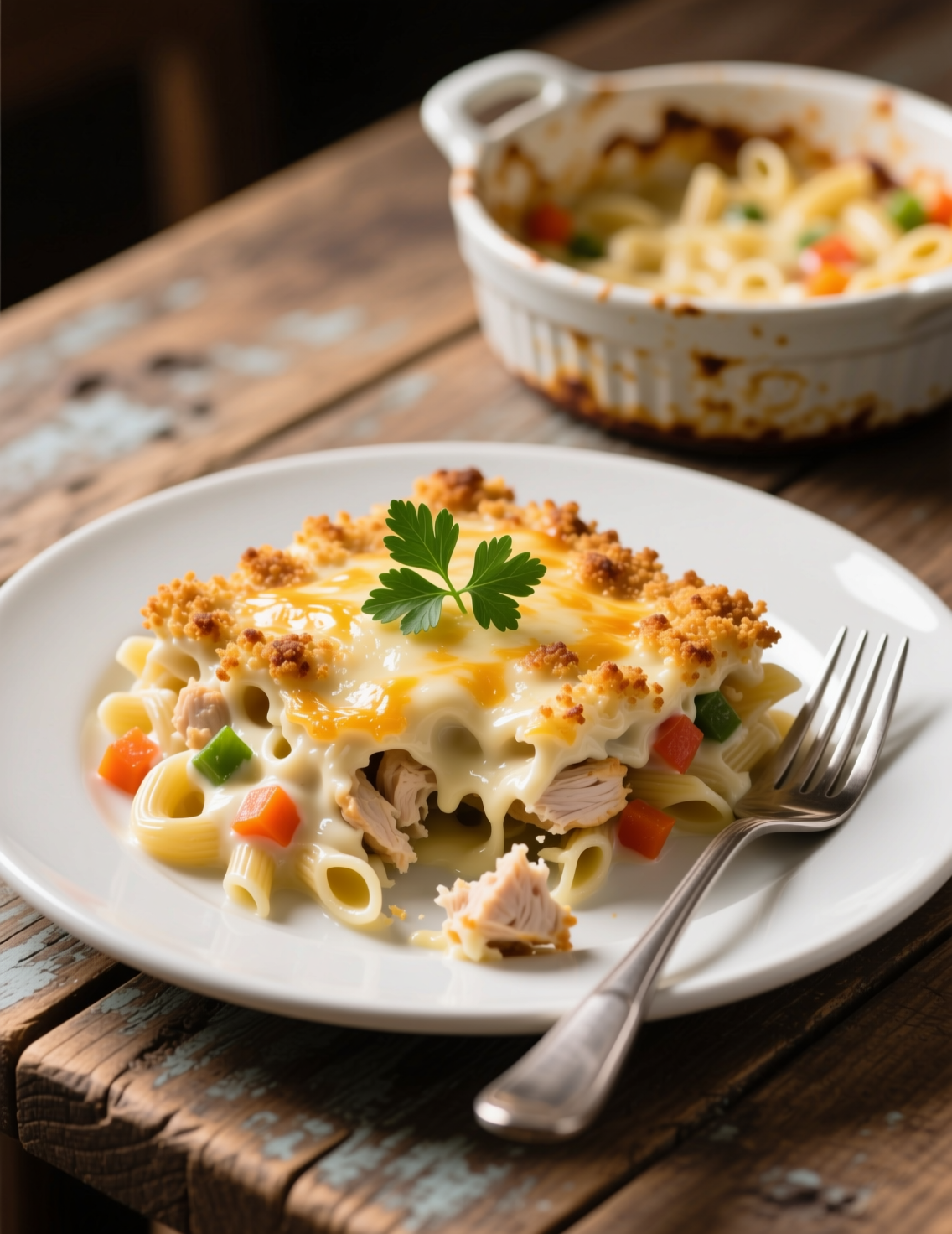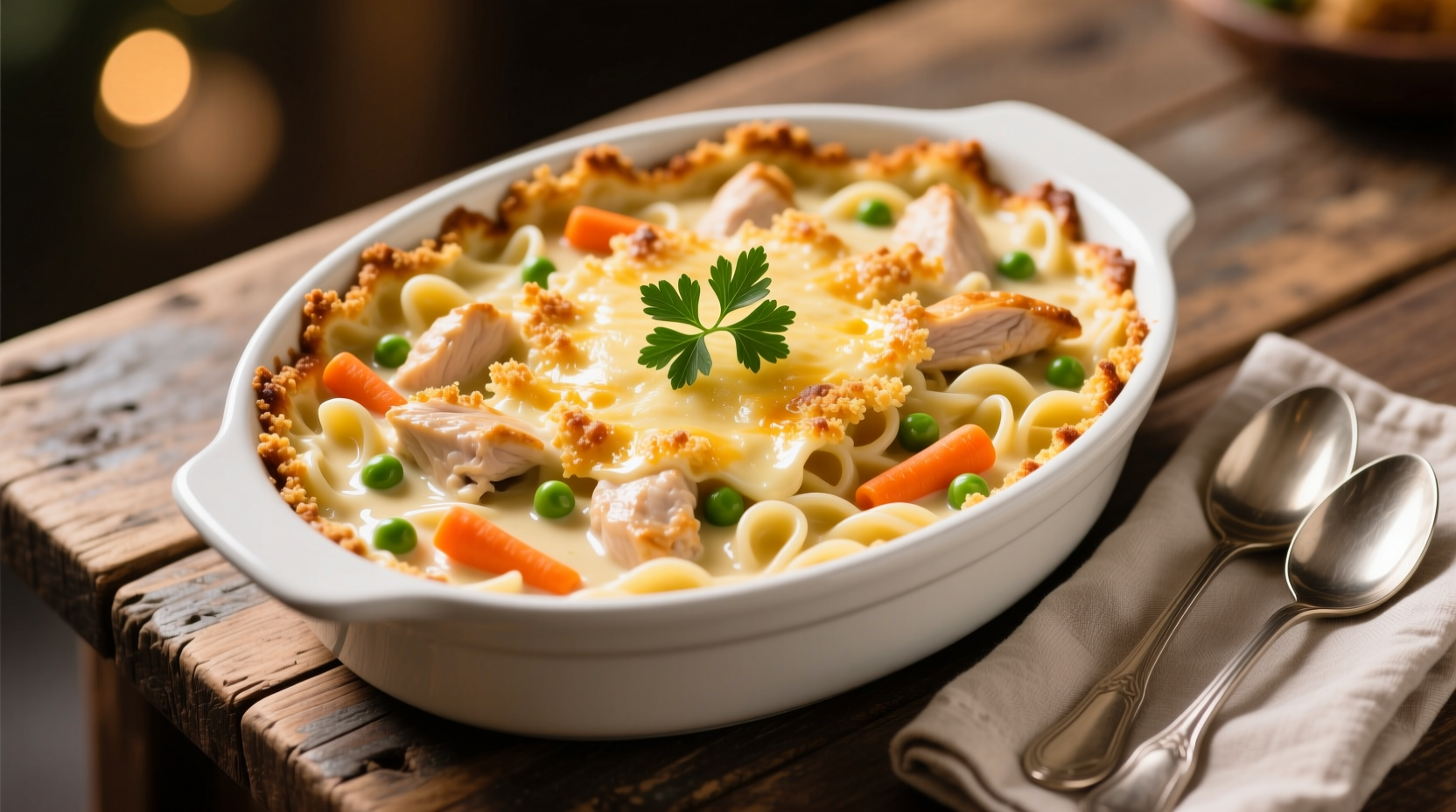Comfort food comes in many shapes, but few dishes have the staying power of a creamy chicken noodle casserole. It’s a recipe that feels homely, yet when done right, has the depth to stand alongside more elaborate entrées. This isn’t just about tossing noodles and chicken in a pan. It’s about texture, balance, and making every forkful as satisfying as the first. In this article, we’ll explore not only how to prepare a creamy chicken noodle casserole for four servings but also the science, craft, and little secrets that elevate it from ordinary to exceptional.
Why Casseroles Still Matter in Professional Kitchens
Casseroles often get boxed into the “weekday dinner” category, but their versatility deserves more recognition. Historically, casseroles rose in popularity in the United States during the mid-20th century, when home cooks sought convenient, nourishing meals that could stretch ingredients. But modern chefs are rethinking casseroles not as shortcuts but as canvases.
For professionals, the appeal lies in the layering of textures—creamy bases with crisp toppings—and the efficiency of creating complex flavors in a single vessel. A well-made chicken noodle casserole hits multiple culinary notes: protein for heartiness, starch for comfort, and sauce for cohesion.
Ingredients: Beyond the Basics
For four servings, here’s the essential lineup:
- 2 cups cooked chicken breast, shredded
- 8 oz wide egg noodles
- 1 cup frozen peas and carrots
- 1 small onion, finely diced
- 2 tbsp unsalted butter
- 2 tbsp all-purpose flour
- 2 cups chicken stock, warm
- 1 cup whole milk or heavy cream
- 1 cup shredded sharp cheddar cheese
- ½ cup sour cream
- ½ tsp garlic powder
- ½ tsp black pepper
- ½ tsp kosher salt
- 1 cup panko breadcrumbs
- 2 tbsp melted butter
- 2 tbsp fresh parsley, chopped
Most cooks stop there. Professionals don’t. Ingredient quality shifts the final outcome more than technique sometimes. Freshly poached chicken, for example, has better texture than rotisserie leftovers. Sharp cheddar offers tang that balances cream, while sour cream adds lactic acidity that prevents the sauce from feeling cloying.
Cooking the Chicken: Method Matters
It’s tempting to grab pre-cooked chicken, but poaching brings out tenderness that roasting can’t match. Place chicken breasts in simmering water with bay leaf, peppercorns, and a little celery. Cook gently until internal temperature reaches 165°F. This technique keeps the protein moist, with none of the stringy dryness that comes from overbaking.
Shredding should be done while still warm. Cold chicken tends to clump, which affects the sauce distribution in the final casserole. That small detail can be the difference between bites that sing and bites that flop.
Building the Cream Base: Roux to Glory
The soul of this dish is the creamy sauce. Start with a simple roux. Melt butter in a saucepan, whisk in flour, and cook for about two minutes. This removes raw flour taste but also gives the base a nutty undertone. Slowly add warm chicken stock, whisking constantly, followed by milk.
Professionals know that sauce consistency must account for baking. If it looks perfect on the stove, it’ll tighten in the oven. Aim for a slightly thinner béchamel than you’d want on pasta. Add sour cream off the heat—it prevents curdling and sharpens the creaminess.
The Noodles: More Than Filler
Wide egg noodles are traditional, but their role isn’t neutral. They soak up sauce aggressively, meaning undercooked pasta can turn gummy and overcooked pasta collapses into mush. The trick: cook noodles to one minute less than al dente. They’ll finish cooking in the oven and absorb just enough sauce without breaking apart.
Texture contrast is what makes a casserole stand out. You want noodles that retain a little chew even after baking.

The Assembly: Layering With Intention
Grease a medium baking dish. Fold together noodles, chicken, vegetables, cheese, and sauce. Everything should be coated evenly, no dry clumps or hidden pockets.
Here’s where artistry sneaks in: seasoning distribution. Salt and pepper in the sauce isn’t enough. Sprinkle a touch of seasoning as you layer to avoid bland spots. Add half the cheese inside and half on top. Cheese that’s embedded melts into the sauce, while cheese on top forms a golden crust.
For the final crown, mix panko with melted butter and scatter across the surface. That crunch is what stops creamy casseroles from feeling monotonous.
Baking: Controlled Heat
Bake uncovered at 375°F for 25–30 minutes. Professionals rely less on timers and more on visual cues. The top should be golden, edges bubbling, and the center hot enough to steam when pierced.
Resting is critical. Let the casserole sit for 10 minutes before serving. This allows the sauce to stabilize, preventing runny servings that collapse on the plate.
Nutrition and Portion Control
For four servings, each portion averages:
- Calories: ~520
- Protein: 32g
- Carbs: 44g
- Fat: 21g
That balance makes it both satisfying and nutritionally sound for most diets. Compared to restaurant casseroles that can climb past 900 calories per portion, this version demonstrates restraint without sacrificing richness.
Professional Variations
Chefs rarely settle for one note. A few professional twists:
- Mushroom Variation: Add sautéed cremini mushrooms to deepen umami.
- Spiced Version: Incorporate smoked paprika or cayenne for warmth.
- Herb Upgrade: Swap parsley for thyme and rosemary for a more aromatic finish.
- Cheese Swap: Gruyère instead of cheddar for nuttiness.
Each variation shifts the casserole’s identity, showing its adaptability across cuisines.
Common Misconceptions
One of the biggest misconceptions is that cream-based casseroles must be heavy. That’s not inherently true. With balanced seasoning and acidity from sour cream, the dish can feel rich but not leaden.
Another misconception is that frozen vegetables compromise quality. In reality, flash-frozen peas and carrots often retain more nutrients than out-of-season fresh ones. The key lies in proper sautéing before mixing—avoid tossing them in raw, or they’ll water down the sauce.

Why Professionals Care About “Simple” Dishes
There’s a growing trend in professional kitchens to elevate simple, nostalgic foods. Diners crave familiarity, but they also expect refinement. A chicken noodle casserole embodies both. Its simplicity hides the technical choices—heat control, sauce stability, textural balance—that separate amateur from expert.
For example, in a 2023 survey of American dining trends, “comfort food with a twist” ranked among the top three consumer demands. Casseroles fit neatly into this movement, making them relevant again in high-end kitchens.
Storing and Reheating Without Compromise
Casseroles are built for leftovers, but reheating often disappoints. The trick is low, slow heat. Cover the dish with foil and reheat at 300°F until warmed through. Avoid microwaving in large portions—sauce separates, noodles toughen. If using a microwave, do it in small servings with a splash of milk stirred in to revive the sauce.
Professionals often prepare components ahead. Poach chicken a day in advance, assemble sauce separately, then combine fresh before baking. This prevents sogginess while still saving time.
Serving Suggestions
While the casserole itself is complete, pairing matters. A crisp green salad with vinaigrette balances the richness. A dry white wine, like Sauvignon Blanc, cuts through the cream. On a professional menu, serving it in individual ramekins rather than one big dish creates visual elegance without changing the recipe.
Conclusion: Crafting Comfort With Precision
A creamy chicken noodle casserole isn’t just nostalgia on a plate. It’s a study in balance—between rich and light, creamy and crisp, homely and refined. For professionals, its value lies in mastering the small things: how noodles absorb sauce, how resting affects serving, how toppings build contrast.
Cooking for four may seem simple, but every detail matters when the goal is not just to feed but to impress. That’s the art of professional cooking—taking something humble and making it extraordinary.
FAQs
What makes this creamy chicken noodle casserole different from a regular one?
It focuses on sauce balance, texture control, and professional cooking techniques for better flavor and consistency.
Can I use rotisserie chicken instead of poached chicken?
Yes, but poached chicken stays more tender and blends better with the creamy sauce.
Should I cook the noodles fully before baking?
No, undercook them slightly so they finish cooking in the oven without turning mushy.
How do I keep the casserole from drying out?
Make the sauce thinner than usual since it thickens during baking.
Can I prepare this casserole ahead of time?
Yes, assemble it without baking and refrigerate, then bake fresh for best results.
What’s the best topping for crunch?
Panko breadcrumbs mixed with melted butter create the crispiest topping.
Can I freeze chicken noodle casserole?
Yes, but freeze before baking for the best texture when reheated.
How long should the casserole rest after baking?
About 10 minutes, so the sauce sets and portions hold their shape.
Can I make it lighter without losing flavor?
Use milk instead of cream and add extra herbs for brightness.
What vegetables work best besides peas and carrots?
Mushrooms, broccoli, or green beans add flavor without watering down the sauce.

Mariana is a passionate home cook who creates delicious, easy-to-follow recipes for busy people. From energizing breakfasts to satisfying dinners and indulgent desserts, her dishes are designed to fuel both your body and hustle.
When she’s not in the kitchen, she’s exploring new flavors and dreaming up her next recipe to share with the Foodie Hustle community.

